Best
Beginner Oboe
Modified Conservatory System MODIFIED CONSERVATORY
SYSTEM OBOE
-
Overall: ABS resin body provides enhanced
durability and a wood-like sound -
Best Feature: Silver-plated keys are fluid and responsive
-
TedScore™: 8/10
Best
Overall Oboe
Professional English Horn with Full Conservatory System High-quality English horn
-
Overall: A full conservatory key system with silver-plated keys
-
Best Feature: Stainless steel arbors and wire springs and Teflon-tipped stainless steel adjusting screw
-
TedScore™: 10/10
Best
Intermediate
Oboe
Oboe Model
-
Overall:
Premium
grenadilla body and bell -
Best Feature:
All cork keys and
metal tenon joints -
TedScore™: 9/10
Exploring the different types of oboes is like wandering eagerly through the woods, where each branch makes a unique sound, and every leaf creates a different pitch.
Choosing which oboe to play is like choosing your favorite chocolate from a box; it’s all about personal preference, and each one gives you a different experience.
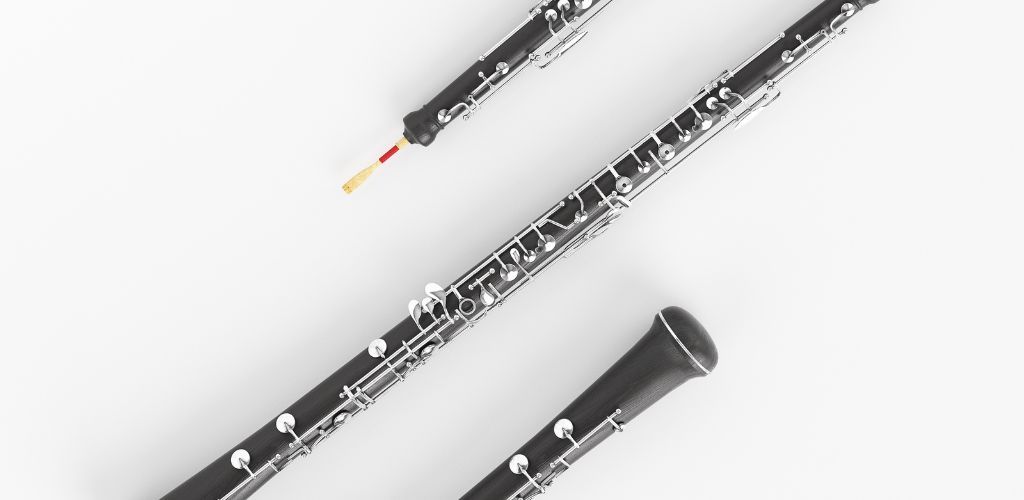
Each type of oboe has its appeal, from the smooth sound of a wooden oboe to the lively tone of a synthetic one. I remember my first encounter with the Fox Tristan Model 580 English Horn, which was as exciting as a colorful peacock showing off in the sun.
By the end of this article, you’ll get to know the soprano, alto, tenor, and grand bass oboe as if they were your long-time buddies. Continue reading, and let’s discover the symphony together!
Types and Characteristics
Exploring the oboe family is like meeting a colorful cast of characters with unique voices and styles. Now, let’s get up close and personal with these woodwind wonders!
Main Members of the Oboe Family
The soprano oboe is the quintessential voice in the choir of oboes, usually crafted from rich woods like grenadilla. It defines the high pitch and bright sound we commonly associate with the oboe family.
The cor anglais, or English horn, bears a mellower tone, a curved tube, and a bulbous bell. It’s like a warm hug for the ears!
The piccolo oboe, the smaller and higher-pitched of the bunch, sounds delightfully vibrant, just like its name suggests.
The bass oboe or baritone oboe plays the low notes with gusto – it’s like the bass guitarist in a rock band keeping the rhythm solid.
The heckelphone steps an octave below the English horn, bringing a rich, deep melody fit for an epic soundtrack.
The musette with its E flat pitch is the tiny one of the family, like a little sibling that still manages to be heard loud and clear.

Size and Pitch Variation
It’s fascinating how the size of these instruments directly affects their pitch. Take the soprano oboe, for example; it’s mid-sized but produces the hallmark high, piercing melodies we adore.
Moving up, we encounter the dainty piccolo oboe, the smallest of them all, reaching pitches that can surprise and delight.
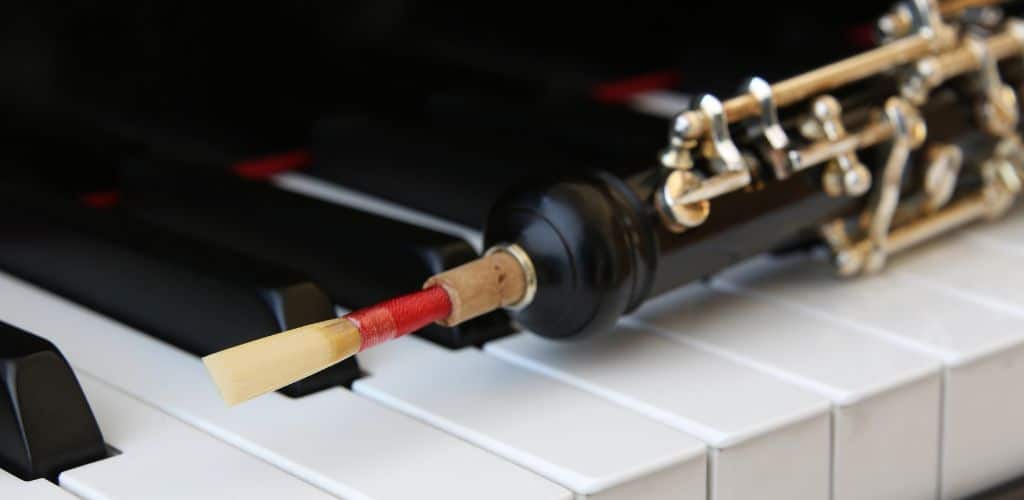
On the other end of the spectrum is the bass oboe, a larger relative that naturally drops into the lower, earthier tones. The heftier heckelphone dwarfs most of its family members, possessing a grandeur that often leads it to be cast as the baritone voice.
As for the materials, wood, like rosewood, doesn’t just make an oboe look pretty; it also softens the tone, smoothing out its vibrant voice. Whether French or Viennese, each oboe pulls its weight, crafting an exquisite tapestry of sound that dances through the air.
Oboe Construction and Materials
The oboe isn’t just a treat for the ears; its construction is a marvel, too! Let’s peek into the material and design elements that make an oboe, well, truly, an oboe.
Key Mechanisms and Design

Metal keys are simply the heartthrob of any oboist. Each key on my oboe connects to rods and pillars, which create a conical bore—a tapering shape I find incredibly clever, giving the oboe its unique sound.
Now, the flared bell at the end is the cherry on top; it helps my oboe project its sound with that characteristic resonance we all adore.
Wood Selection and Alternatives

I’m besotted with my grenadilla wood oboe—superbly dense and producing such a rich tone. Yet, for those rainy days, I’ve seen oboes made from plastic or resin; they’re durable and quite friendly to one’s wallet.
But let’s not forget the reed—it’s fashioned from cane, and oh, what a fussy little bit of craftsmanship that is essential for my musical musings.
Oboe Playing Techniques and Repertoire

In exploring the oboe, I’ve uncovered a rich tapestry of playing styles and a stunning repertoire that showcases the instrument’s expressive power.
From orchestral staples to breathtaking solo pieces, the oboe’s distinctive timbre and double reed instrument make it a cherished voice in music.
Playing Styles Across Genres

Oboe playing is like being a vocal chameleon; it adapts to genres from the delicate threads of Baroque to the robust tapestry of modern orchestral works.
In an orchestra, my role often involves weaving intricate melodies that float above the ensemble, demanding a keen breath control and a knack for finding just the proper vibrato – a gentle ripple, not a wave!
My double-reed vibrates life into every note, creating a sound as complex as it is delightful.
In solos, the oboe transforms; it becomes more than an instrument; it’s a vessel of storytelling, demanding every ounce of my expression.
Notable Oboists and Solo Pieces
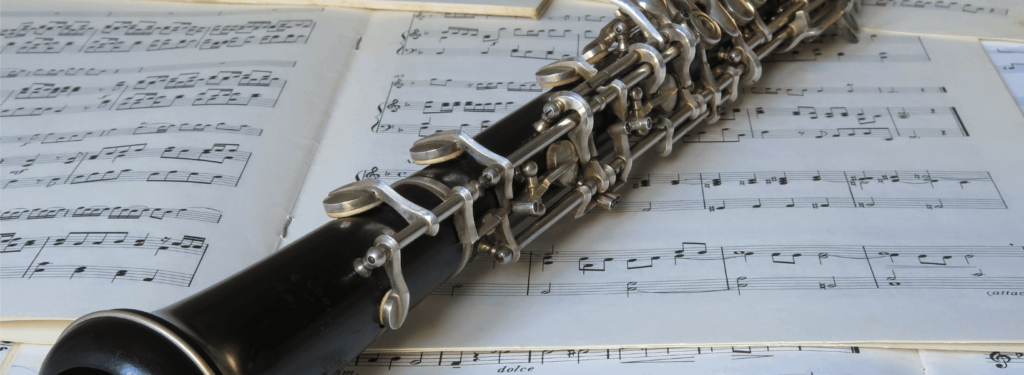
I’ve always looked up to professional oboists— they play the oboe with such finesse that each performance seems fresh and timeless. A favorite piece in my solo repertoire is Benjamin Britten’s “Six Metamorphoses after Ovid,” which tests my ability to paint characters with sound alone.
Some oboists that leave me awestruck include Heinz Holliger and Albrecht Mayer – their control and quality of tone set the bar for oboists around the world, making the oboe sing in ways I strive to emulate.
Each note they play tells a story, and their performances are lessons in the art of the modern instrument.
Oboe Brands Recommendation
Fox Tristan
The Fox Tristan English horn is a professional-grade instrument made of select maple and finished like a professional bassoon. It is renowned for its depth and resonance, offering a rich and expressive sound.
Fox Tristan Model 580 Professional English Horn with Full Conservatory System
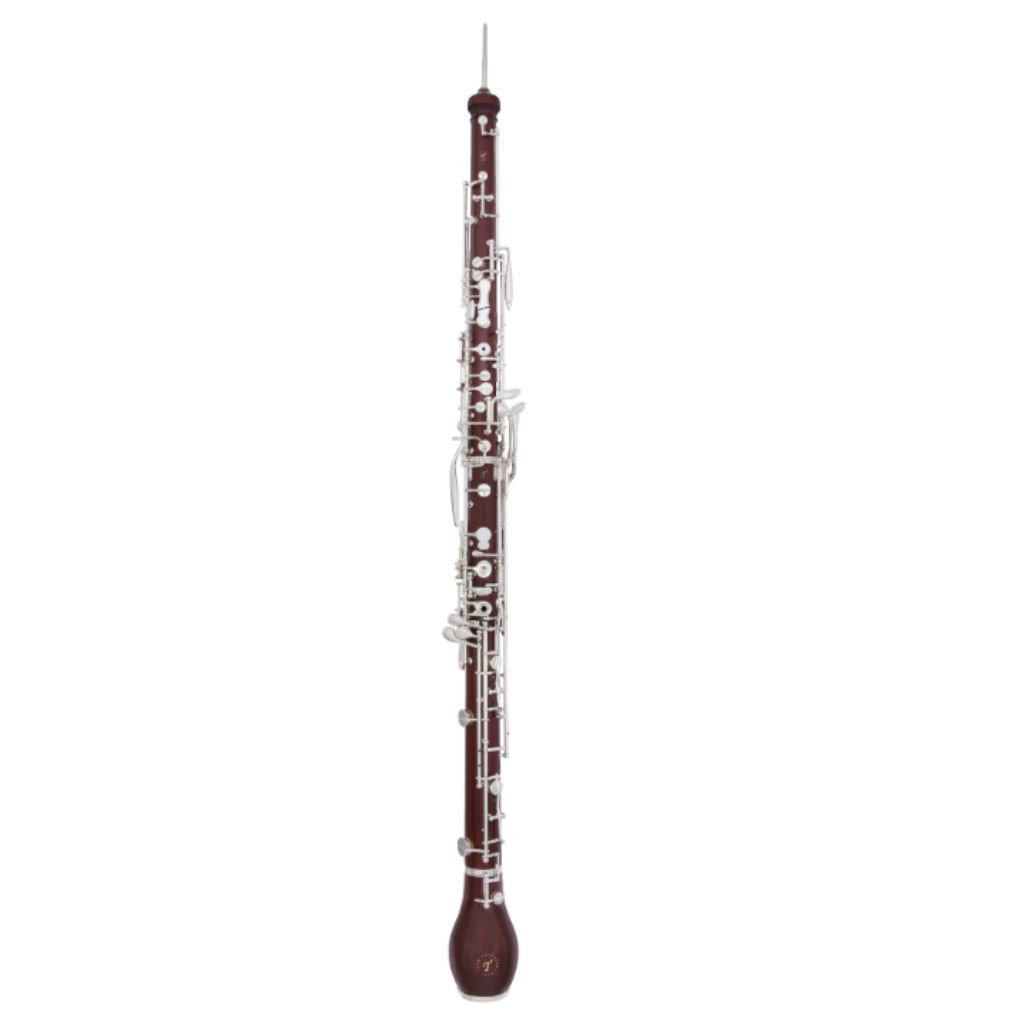
FEATURES: A full conservatory key system with silver-plated keys
OTHER INFO: Stainless steel arbors and wire springs and Teflon-tipped stainless steel adjusting screws
- Comes with a professional-quality case, two XL bocals, aluminum tenon caps, a 3-reed case, silk swab, screwdriver, and cork grease
- None
When you click ‘Check Price’, you’ll see there are loads of great places to buy this item. Our personal favorite is Sweetwater for the US, and Thomann and Gear4Music for the UK & Europe.
They are the largest music retailers, with excellent customer service, competitive prices, really fast shipping, and the longest guarantees.
The professional musician who wrote this article combined many things,
from the product build, manufacturer’s reputation through to feedback
from other users, to create our famous TedScore™.
Yamaha

The Yamaha oboe, known for its high-quality craftsmanship and precision, offers a clear sound quality and superb intonation.
Yamaha oboes are designed to focus on stability and accuracy in the bore, making them a popular choice among musicians for their reliable performance and exceptional sound.
Yamaha YOB-441IIT Intermediate Oboe

FEATURES: Premium grenadilla body and bell
OTHER INFO: All cork keys and metal tenon joints
- Includes a Yamaha OBC-430II case and OBB-430II cover
- It is priced higher compared to some other intermediate oboe models
When you click ‘Check Price’, you’ll see there are loads of great places to buy this item. Our personal favorite is Sweetwater for the US, and Thomann and Gear4Music for the UK & Europe.
They are the largest music retailers, with excellent customer service, competitive prices, really fast shipping, and the longest guarantees.
The professional musician who wrote this article combined many things,
from the product build, manufacturer’s reputation through to feedback
from other users, to create our famous TedScore™.
Jupiter
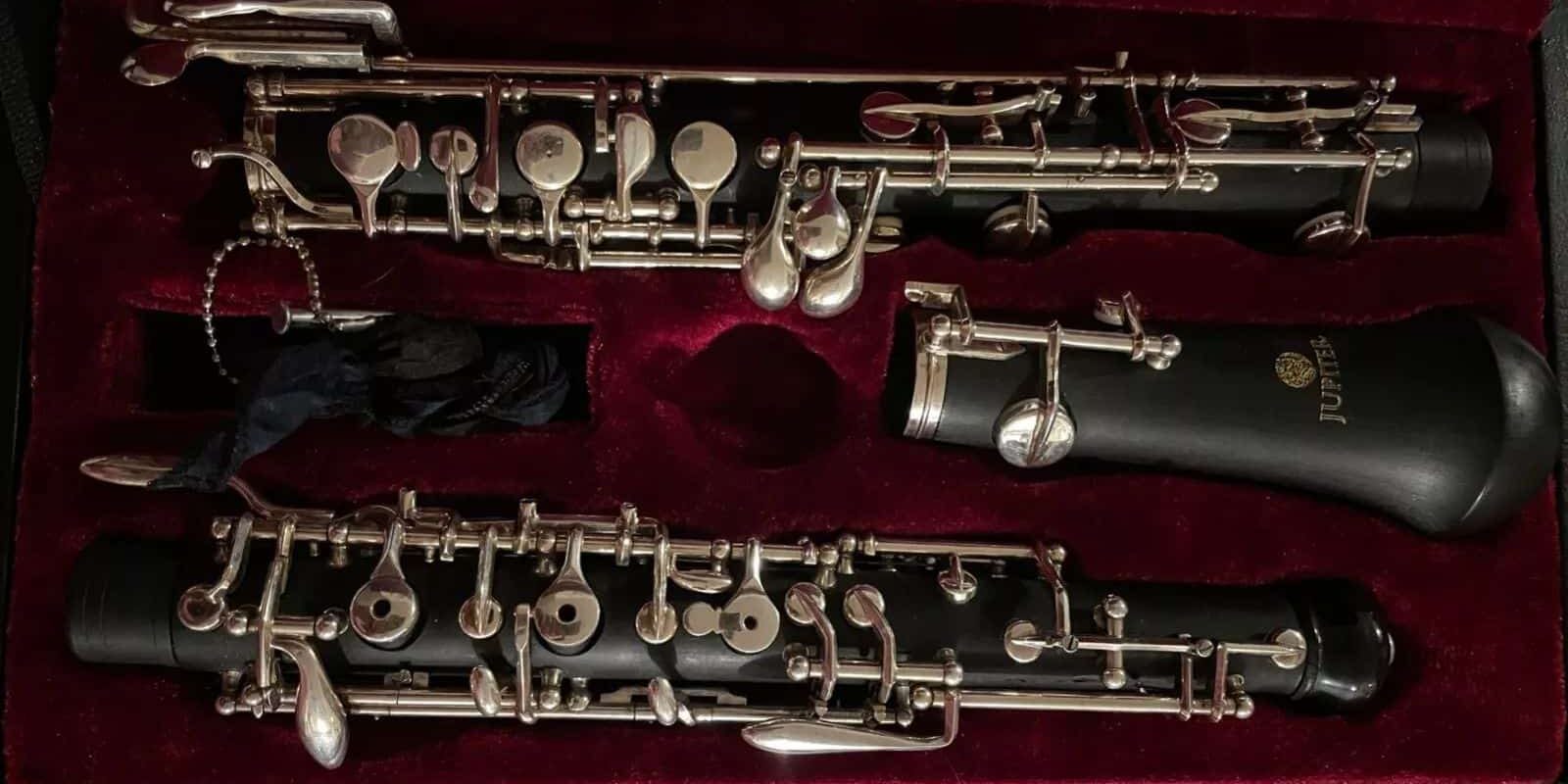
Jupiter oboes are recognized for their durable construction and responsive playability, making them popular for students and advancing players.
Jupiter JOB1000 Student Oboe Modified Conservatory System
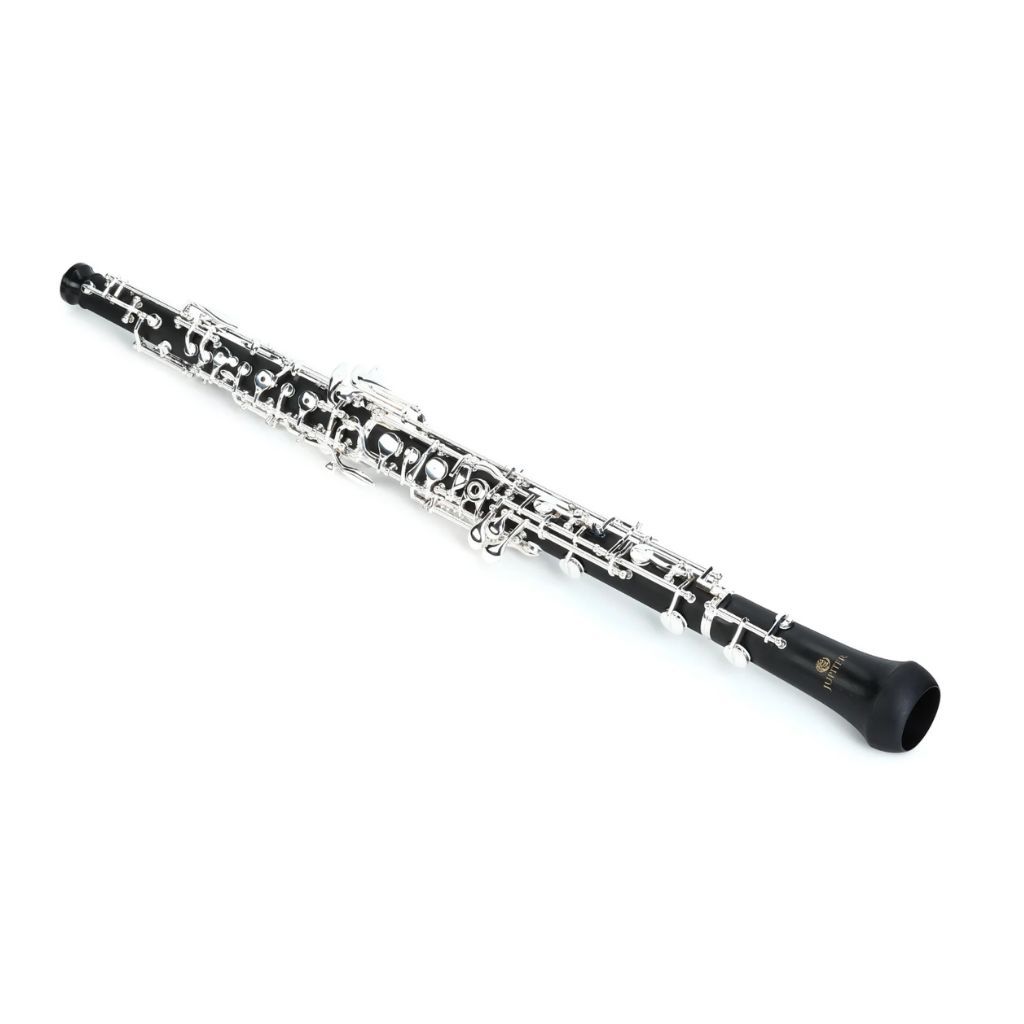
FEATURES: ABS resin body provides enhanced durability and a wood-like sound
OTHER INFO: Silver-plated keys are fluid and responsive
- Includes a lightweight ABS molded carrying case
- Modified conservatory system limiting in terms of key work customization and flexibility
When you click ‘Check Price’, you’ll see there are loads of great places to buy this item. Our personal favorite is Sweetwater for the US, and Thomann and Gear4Music for the UK & Europe.
They are the largest music retailers, with excellent customer service, competitive prices, really fast shipping, and the longest guarantees.
The professional musician who wrote this article combined many things,
from the product build, manufacturer’s reputation through to feedback
from other users, to create our famous TedScore™.
Oboe Reed and Maintenance
The oboe is a prominent example of a double-reed woodwind instrument known for its distinctive sound and expressive capabilities.
Oboe reeds, made from two pieces of cane bound together, are crucial components that significantly impact the instrument’s tone and playability.
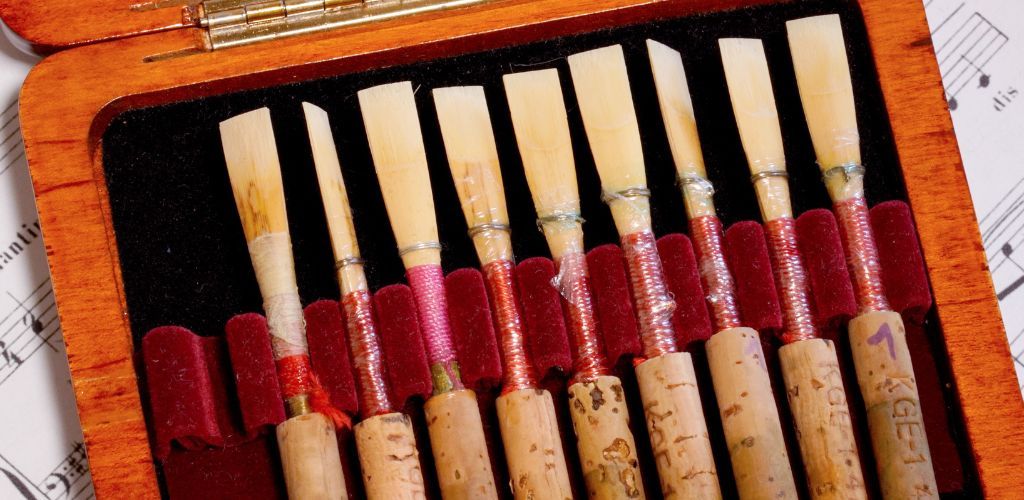
Musicians who play such instruments often spend considerable time crafting and refining their oboe reeds to achieve the desired sound and response, highlighting the importance of these small yet critical components in the oboe’s performance.
Oboists must regularly maintain and carefully select oboe reeds to ensure consistent and high-quality performance on this unique double-reed woodwind instrument.
Types of Oboes:
Recap
Exploring the world of oboes has been akin to a delightful stroll through a verdant musical landscape. I’ve encountered the charming classical oboe, perfect for orchestral and chamber music, and had the pleasure of meeting its expressive siblings, the oboe d’amore and the English horn.
The bass oboe and heckelphone are the gentle giants of the family, contributing resonant lows that enrich the ensemble’s sound. I’ve found joy in understanding these diverse instruments and their unique voices.
I’m delighted by the oboe’s versatility, from Baroque and Classical to modern oboe. It’s fascinating how this solo instrument plays its part in the grand tapestry of music.

Their specializations across different musical genres and eras showcase a wide array of colors and moods, broadening my appreciation for this woodwind family.
In my journey, I’ve admired the various other relatives of the oboe, like the Viennese and the Wiener, each with their distinct charm. Different reeds, bore designs, and fingering systems contribute to an ensemble’s richness.
The oboe’s diversity is a testament to its enduring legacy and adaptability through time—a continual source of inspiration and aural pleasure for musicians and listeners alike.
Wait! Before you go…
Discover the best beginner oboes and make an informed choice with this comprehensive article.
FAQ's
There are several types of oboes, including the soprano, alto, tenor, and bass oboe.
A big oboe is called a bass oboe.
The most common oboe is simply called the oboe, also known as the soprano oboe.
The main difference between the oboe and the oboe d’amore is their pitch and tone. The oboe d’amore is larger than the oboe and has a lower pitch. Its tone is more mellow and tranquil compared to the brighter sound of the regular oboe.











While the recommendations for oboe brands such as Fox Tristan and Yamaha are valuable, especially for students and intermediate players, I believe further emphasis on the variances in sound quality and playability between these brands would benefit the reader. Additionally, the maintenance section could be expanded to cover not only reed care but also bore oiling procedures and temperature acclimatization tips to prevent cracking in wooden oboes.
Oboes are just ducks in disguise, change my mind lol
Never realized how complex the key mechanisms on an oboe were till I read this. Makes me appreciate the craftsmanship more. BTW, Katie Bennington, solid breakdown on that.
Yeah, it’s fascinating how detailed instrument making can get, especially with woodwinds.
Loved the part about oboe reeds. How often should I replace them if I’m practicing every day?